Little late this one but better late than never, and I wanted to discuss some other stuff….
Great as the little Oculus Go is, it has one signficant drawback – well actually three. Its only has three degrees of freedom (DOF) compared to the more expensive VR headsets such as the Oculus Rift, HTC Vive and others which all have 6DOF. Not ponly do you have the yaw/pitch/roll freedoms of the Go, you get full X / Y / Z degrees – i.e. you can move around, squat down, or stand on your toes and all is captured by these more capable devices – obviously with the unfortunate tethering to the monster PC you need to drive them
But…. at the end of May this year Oculus launched the Quest – full six degrees of motion, and twin controllers (Oculus Touch)
And the big one, its untethered too, just like the Go!
All I can say is wow wow wow – despite being ‘just another phone chipset’ in a headset, Oculus have created an awesome thing.
The Vader Immortal series, although short, are beautiful things – lightsaber duelling with the baddy himself – including getting thrown across the floor by the force (not physically of course, just virtually) is incredibly immersive, whilst battling with a TIE fighter exhausted me – and being able to experience this stood in the garden without a PC or cable in sight is just fantastic. Disclaimer: your WIFI needs to be up to scratch in the garden for the best experience, although I’m not sure if the Vader experiences actually need it.
My other favourites are Red Matter – another beautifully rendered other-world puzzle solver – and Gadgeteer. The best way to describe this one is Domino Rally on speed. If you of a certain age you will remember a DOS PC game called The Incredible Machine – well image in that in 3D (not 2D) and all rendered in a cozy little VR World. In Sandbox mode, I’m pretty sure the old Honda Cog Advert could be recreated in Gadgeteer.
And finally I’d like to make a shout out Amazon’s AWS Sumerian. In my job we have need to create 3D worlds that match what we do for real and have them work in VR (and AR) headsets. Your standard choice her would be Unity or UnrealEngine… but the learning curve is of North-Face-of-the-Eiger proportions and the dev license costs are excessive if you want to do it properly. I’ve played around with Amazon Lumberyard without much success and also the geeky browser based Three.js / WebGL / WebVR mash ups with which I was having some success. Sumerian brings the GUI and slickness of Lumberyard to the browser based VR world – for me a very potent combination – and don’t knock the browser scripting VR platform – have a look at https://moonrider.xyz to see the kind of results that can be got

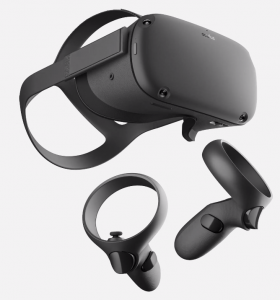

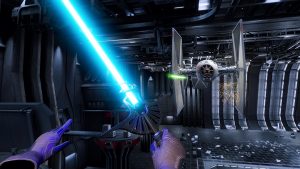
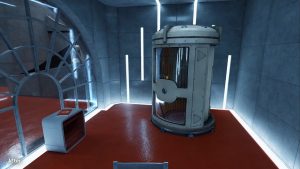
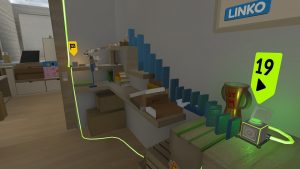
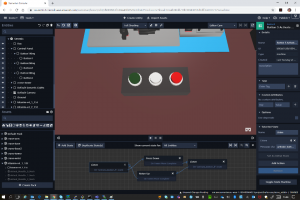
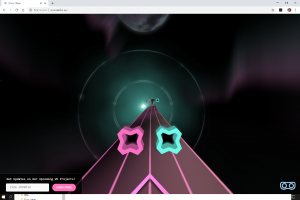
A year later I added a Quest 2 to my headset collection which had the horsepower to support hand tracking and black and white Mixed Reality – this proved to be a fantastic purchase which kept me going for over three years at home and in the office for VR demos with clients
And in October 2023 I upgraded again to the epic Quest 3 which brings full Mixed Reality, Depth Sensor with Full Environment Scanning and more horsepower to drive it along – see the Mixed Reality blog post at http://www.stevenicklin.com/blog/everything-else/mixed-reality/. I then replaced a broken controller on the Quest 1 and now ALL THREE devices function beautifully together